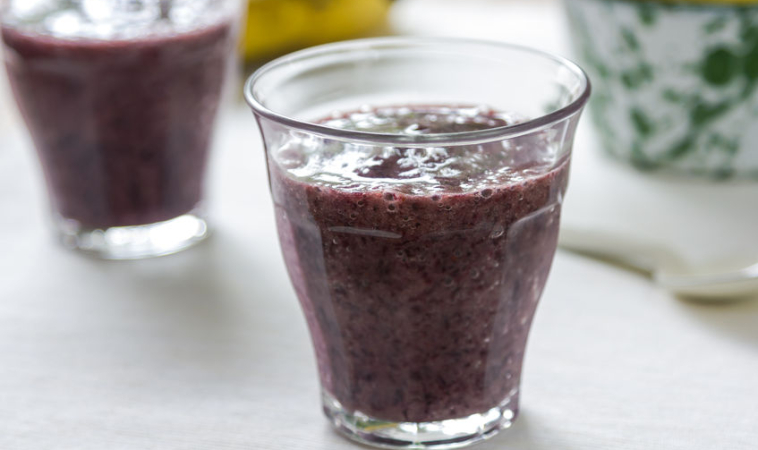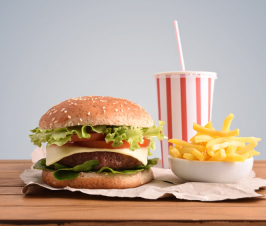Twenty six million Americans have type 2 diabetes. Ninety percent of the people who develop type 2 diabetes are obese. Other factors that contribute to the development of type 2 diabetes are both genetics and lifestyle (excessive caloric intake and inadequate caloric expenditure). The amount and type of food we consume is a direct determinant to the development of type 2 diabetes.
Advanced Glycosylated End Products (AGEs)
AGEs are food derived, pro-oxidant species that contribute to insulin resistance and suppress protective cellular mechanisms. AGEs are considered to be the cause of diabetes related complications, primarily the vascular inflammation leading to atherosclerosis and retinopathy. AGEs are generated in the diet when highly reactive oxygen species react with both glucose and fat metabolism. They are absorbed from cigarette smoke and eating highly heated, processed foods. Browning food when cooking, a processed known as the Maillard reaction, generates large quantities of AGEs. AGEs are increased in food with high lipid and protein content and elevated pH and with the application of high, dry temperature (grilling, frying, roasting, baking, barbecuing). Low-AGE diets in animal studies have been shown to reverse insulin resistance and chronic inflammation, inhibit the progression of atherosclerosis and prevent diabetic nephropathy and neuropathy. As a result of AGEs, anti-diabetic diets are focused on eliminating processed foods, refined and simple carbohydrates while increasing fiber, antioxidants and foods that have been shown to stabilize blood sugar: chia seeds, Cinnamon cassia and maca.
A Raw Food Diet
Eating a raw diet has the ability to eliminate all of the toxins and AGE producing processes associated with cooking food. For more information on what toxins are generated through heating food, please see What Is Raw Food?. Raw food is rich in enzymes, antioxidants, vitamins and minerals that protect cells, tissues and vessels from oxidative damage.
Chia
Raw Food On A Real Schedule talks about the nutritional components of chia seeds: omega 3’s, protein, glycoprotein, antioxidants and fiber. Chia’s glycoprotein coat soothes and heals the digestive tract while also slowing digestion. Slowing digestion helps to regulate blood sugar and prevent the spikes associated with diabetes. Chia has been shown to decrease blood pressure in diabetics and regulate cholesterol levels leading to greater cardiovascular health.
Cinnamon cassia
Cinnamon cassia is a species of cinnamon commonly found in North America. Ceylon cinnamonfrom Sri Lanka contains more coumarin, a compound known for its blood thinning properties. In recent studies, both types have been shown to have medicinal benefits. Cassia species has been shown to have a therapeutic effect in reducing fasting blood glucose by 10.3%–29%. One, 3 or 6 grams per day reduced glucose, triglyceride, LDL cholesterol, and total cholesterol levels in subjects with type 2 diabetes. Cinnamon is an easy thing to add to most sweet dishes including: morning smoothies, chia pudding and desserts.
Maca
Maca is a Peruvian root. It has traditionally been thought to boost sexual lobido and endurance in both men and woman as well as act as a hormone balancer. It is a good source of B vitamins, Vitamin C, iron and potassium.
In an interesting study, Maca was given to rats as part of a high sucrose diet for 2 weeks. Rosiglitazone, a well known diabetic medication, was used as a positive control for a blood sugar reducing substance. Maca significantly decreased the levels of “bad cholesterol” (VLDL+ LDL), total cholesterol, and triacylglycerols in both the blood and liver and increased glucose tolerance. The same study showed a significant increase in the activity of superoxide dismutase and glutathione, two of our body’s most powerful antioxidants. Maca has the capacity to scavenge free radicals and protect against oxidative stress caused by pro-oxidants such as AGEs.
Increasing foods such as raw chia, maca and cinnamon can decrease the amount of AGEs in the body, lower blood sugar, blood pressure and lipid levels while increasing powerful antioxidants. Together these actions decrease the incidence of type 2 diabetes and diabetes related complications.
Blood Sugar Stabilizing Recipes
Morning Smoothie
Ingredients
- 1c Almond /Coconut milk
- 1 tsp Maca root powder
- 1 tbs Chia seeds
- 3 leaves Kale
- ¼ cup Blueberries
- ¼ cup Strawberries
- 1 tsp Cinnamon
Directions: place all ingredients into a high powered blender and mix
Cookies
Ingredients
- 50 g Oat flour
- 50 g Coconut flour
- 10 g Chia seeds
- 8g Maca root powder
- 5-10 g Ginger peeled and diced
- 70g Blueberries (frozen)
- 40 g Macadamia nuts
- 4 g Cinnamon cassia
- 50 g Honey
- 5 c Water
Directions: Add all the dry ingredients into a food processor. Add the water in gradually at the end. Place the cookie batter in small balls on a dehydrator sheet and flatten with a fork. Dry overnight at 115 degrees until desired consistency. Enjoy!
 Dr. Ariel Jones is a native of Vancouver BC and a graduate of BINM (2013). Her practice emphasizes removing the physical, mental and spiritual obstacles to cure while implementing a toxin-free lifestyle for raw, radiant health. Ariel has enjoyed living in Victoria, BC during her BSc. in biology and psychology, Calgary AB and Hilo Hawaii for a post-graduate residency focused on raw food diet, detoxification, addictions and cancer therapies.
Dr. Ariel Jones is a native of Vancouver BC and a graduate of BINM (2013). Her practice emphasizes removing the physical, mental and spiritual obstacles to cure while implementing a toxin-free lifestyle for raw, radiant health. Ariel has enjoyed living in Victoria, BC during her BSc. in biology and psychology, Calgary AB and Hilo Hawaii for a post-graduate residency focused on raw food diet, detoxification, addictions and cancer therapies.
References:
- Khardori, R. Type 2 Diabetes Mellitus . Type 2 Diabetes Mellitus. 2014. Available at: http://emedicine.medscape.com/article/117853-overview#aw2aab6b2b3. Accessed January 15, 2015.
- Basta, G. Advanced glycation end products and vascular inflammation: implications for accelerated atherosclerosis in diabetes. Oxford University Press Journals. 2004. Available at: http://cardiovascres.oxfordjournals.org/content/63/4/582.full. Accessed January 15, 2015.
- Kellow, N, Savige, G. Dietary advanced glycation end-product restriction for the attenuation of insulin resistance, oxidative stress and endothelial dysfunction: a systematic review. Naturecom. 2013. Available at: http://www.nature.com/ejcn/journal/v67/n3/full/ejcn2012220a.html. Accessed January 15, 2015.
- Jones , AT. Raw Food on a Real Schedule. NaturalPath. 2014. Available at: https://naturalpath.net/food/recipes/raw-food-on-a-real-schedule/. Accessed January 14, 2015.
- Jean-Jacques, D. Canadian Journal of Physiology and Pharmacology. From type 2 diabetes to antioxidant activity: a systematic review of the safety and efficacy of common and cassia cinnamon barkThis article is one of a selection of papers published in this special issue (part 1 of 2) on the Safety and Efficacy of Natural Health Products –. 2007. Available at: http://www.nrcresearchpress.com/doi/abs/10.1139/y07-080#.vlazk1qbtzz. Accessed January 14, 2015.
- KHAN, A. Cinnamon Improves Glucose and Lipids of People With Type 2 Diabetes. Cinnamon Improves Glucose and Lipids of People With Type 2 Diabetes. 2003. Available at: http://care.diabetesjournals.org/content/26/12/3215.full.pdf html. Accessed January 14, 2015.
- VEČEŘA, R. The Influence of Maca (Lepidium meyenii) on Antioxidant Status, Lipid. and Glucose Metabolism in Rat. 2007. Available at: http://link.springer.com/article/10.1007/s11130-007-0042-z. Accessed January 14, 2015.
- Sandoval, M. Download PDFs. Antioxidant activity of the cruciferous vegetable Maca (Lepidium meyenii). 2002. Available at: http://www.sciencedirect.com/science/article/pii/s0308814602001334. Accessed January 14, 2015.
- Nutrition Facts. An Analysis for Maca Powder. 2014. Available at: http://nutritiondata.self.com/facts/custom/2193874/0?print=true. Accessed January 15, 2015.

















